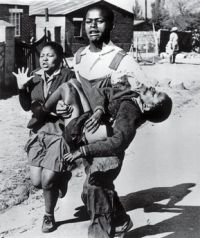
In the wake of Youth Month in South Africa, we reflect on the youth of June 16, 1976, 37 years since the uprising that contributed to overcoming apartheid. They stood firm and reclaimed their agency without waiting for someone to come and rescue them and took charge of their futures by fighting against Bantu education and the right to be able to decide how, what and in which language they are taught.
What would a reenactment of June 16 look like today? Would it look like the “Fees Must Fall” movement for free education or the “Rhodes Must Fall “ movement to decolonize educational institutions”? I do not think it would be any of the two. There is no comparison between what happened in 1976 to now and it would not be fair to compare the two.
The timeline of these events differs, and the period sets them apart. In 1976 the Apartheid government was at its most ruthless and protesting could equate to losing your life and as we know many children paid with theirs on this day. Today it is also risky to protest but it is a right that our constitution protects.
The youth of today face different challenges than those of 37 years ago and the way protest happens is different. Their protest ranges from using social media as a tool to protest to physically displaying their unhappiness.
We have museums and institutions that make sure that these leaders and events remain relevant and that we do not forget our shared history. The student uprising is captured in one of these museums, namely, the Hector Pietersen Museum. The Government celebrates these days by having events that include performances and speakers and they also do commemoration through naming and monuments.
The world is changing rapidly and there is a risk that these historical events could lose their power to be remembered and the lessons not to be repeated. In 20 years, we will still remember the students of 1976. Should we start commemorating these events in diverse ways, we know the way that history is documented has changed; we see it happening in real-time on our phones.
The heritage and history of spaces have been trying to change, considering technological changes that are changing the world and the ways we interact every day, but it has been slow.
Commemoration is there to make meaning of the past, so we should weave these histories into the challenges we are facing to find better solutions. History inspires leadership by demonstrating how people met the complex challenges of the past. The heritage space should build on these and find different and better ways to memorialise and commemorate, when it comes to the youth, in years to come June 16 will be just another day in June.
Image: By Sam Nzima - Dzambukira, Proud (November 5, 2006). "Remember, Remember the Fifth of November". Harvard Computer Society., Fair use, https://en.wikipedia.org/w/ind...